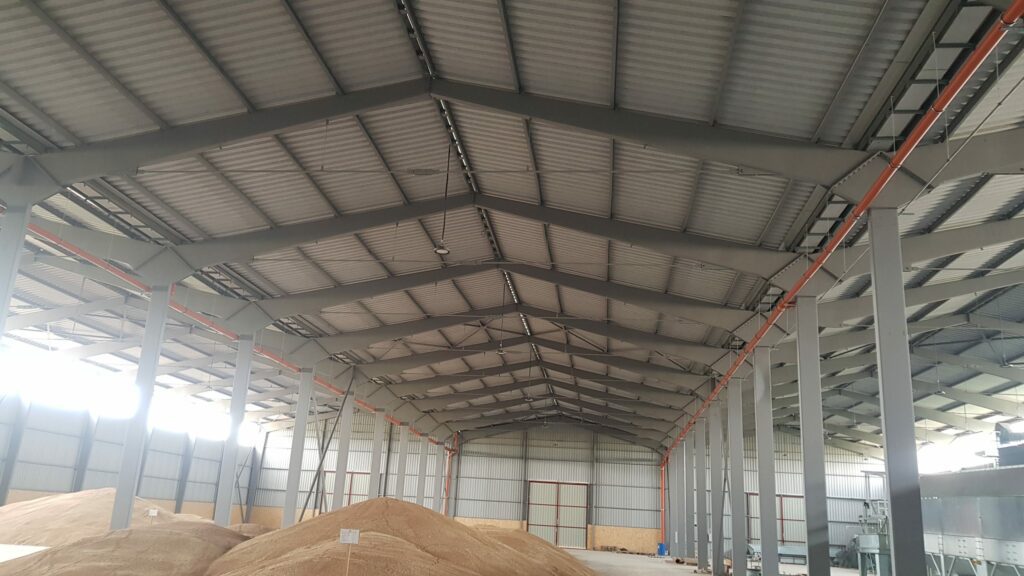views
Introduction
Wet insulation in metal buildings is a pressing issue that can lead to a range of problems, from reduced energy efficiency to structural damage. Addressing this challenge promptly is essential to maintaining the integrity and performance of your metal building. This guide provides a comprehensive approach to dealing with wet insulation, including inspection, remediation, and prevention strategies.
Understanding the Causes of Wet Insulation
Before you can effectively remedy wet insulation, it's crucial to understand what causes it. Wet insulation in metal buildings often results from:
- Roof Leaks: One of the most common causes, where water infiltration through the metal roof leads to moisture accumulation in the insulation.
- Condensation: Poor ventilation and temperature differences between the interior and exterior of the building can cause condensation, which then affects the insulation.
- Plumbing Leaks: Leaks from pipes running through or near insulated areas can also contribute to wet insulation issues.
- High Humidity: Excessive humidity levels inside the building can contribute to insulation becoming damp over time.

Inspecting for Wet Insulation
To address wet insulation effectively, start with a thorough inspection:
- Visual Inspection: Examine the interior of the metal building for signs of moisture. Look for water stains, mold growth, and damp spots on walls, ceilings, and floors.
- Roof Inspection: Check the roof for visible damage, such as missing or damaged panels, which could allow water to enter.
- Check Insulation: If accessible, inspect the insulation material itself. Wet or damp insulation will often feel soggy or have an unpleasant musty odor.
- Monitor Humidity Levels: Use a hygrometer to measure indoor humidity levels, which can help identify potential issues contributing to moisture problems.
Steps to Remedy Wet Insulation
Once you have identified the source of the moisture, follow these steps to remedy the issue:
1. Identify and Repair Leaks
The first step in resolving wet insulation is to address any leaks:
- Metal Roofing Leak Repair: Inspect the metal roof for leaks and repair any damage. This may involve replacing missing panels, sealing seams, or applying waterproof coatings to prevent further water ingress.
- Plumbing Repairs: Fix any leaks in plumbing systems. Ensure that all pipes are properly sealed and maintained to prevent future issues.
2. Dry Out the Insulation
After addressing the source of moisture, it's time to dry out the insulation:
- Remove Wet Insulation: If the insulation is severely damaged, it may need to be removed and replaced. Wet insulation loses its effectiveness and can lead to mold growth if not properly dried.
- Use Dehumidifiers: Employ dehumidifiers to reduce moisture levels in the building. This will help to dry out any remaining dampness in the insulation and the surrounding environment.
- Improve Ventilation: Increase airflow by opening windows or using fans to facilitate the drying process. Proper ventilation will help to remove excess moisture from the air.
3. Assess and Replace Damaged Insulation
Once the insulation is dry, assess its condition:
- Inspect for Damage: Check for any signs of deterioration, such as mold or mildew. If the insulation is compromised, it will need to be replaced.
- Replace Insulation: Install new insulation that meets the specifications for your building. Ensure that the replacement insulation is properly installed and sealed to prevent future moisture issues.
Preventing Future Wet Insulation Problems
To avoid recurring issues with wet insulation, implement these preventive measures:
1. Regular Roof Maintenance
Regularly inspect and maintain the metal roof to prevent leaks:
- Routine Inspections: Schedule periodic roof inspections to identify and address any potential problems before they become severe.
- Prompt Repairs: Address any issues with the roof immediately to prevent water from infiltrating the building.
2. Improve Building Ventilation
Proper ventilation is crucial for preventing condensation and moisture buildup:
- Install Ventilation Systems: Consider installing ventilation systems, such as exhaust fans or ridge vents, to improve air circulation and reduce humidity levels.
- Maintain Airflow: Ensure that air can circulate freely within the building to prevent the buildup of moisture.
3. Manage Indoor Humidity
Control indoor humidity levels to prevent condensation:
- Use Dehumidifiers: Employ dehumidifiers to maintain optimal humidity levels inside the building.
- Monitor Humidity: Regularly check humidity levels using a hygrometer and adjust as needed to keep them within a safe range.
4. Regular Insulation Inspections
Conduct regular inspections of your insulation to catch any issues early:
- Inspect Insulation: Periodically check the condition of the insulation to ensure it remains dry and effective.
- Address Issues Promptly: Address any signs of moisture or damage immediately to prevent further problems.

Conclusion
Remedying wet insulation in metal buildings requires a thorough understanding of the causes, effective inspection, and targeted remediation strategies. By addressing leaks, drying out the insulation, and implementing preventive measures, you can maintain the performance and longevity of your metal building. Regular maintenance and vigilance will help you avoid future insulation issues, ensuring a safe and efficient building environment.
For professional assistance with metal building insulation repairs or metal roofing leak repair, consider consulting experts who can provide tailored solutions to address and prevent moisture problems effectively.























Comments
0 comment